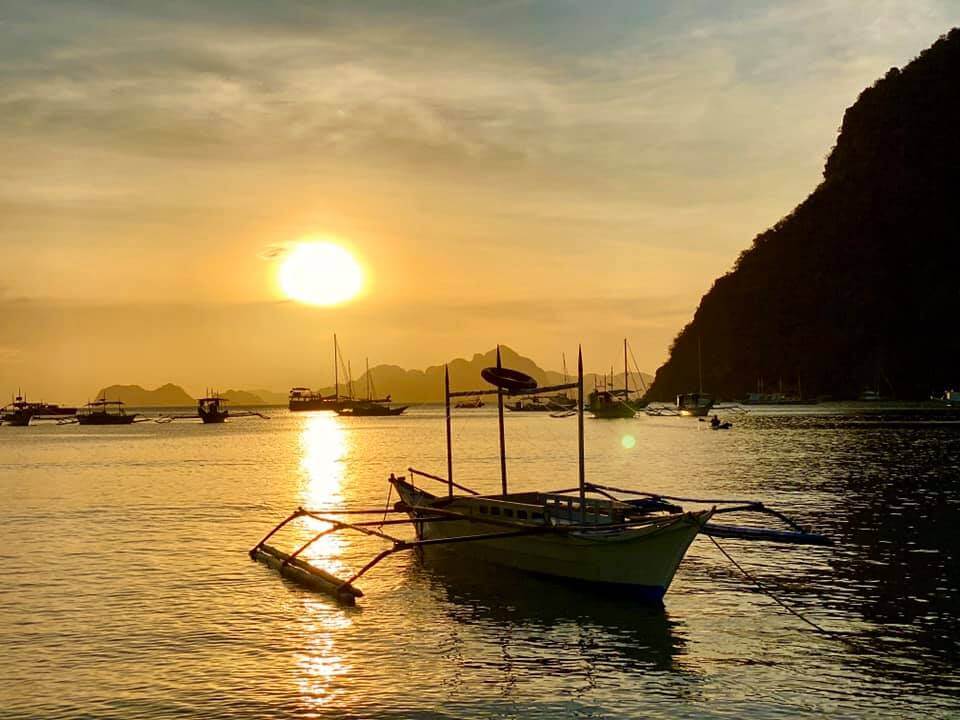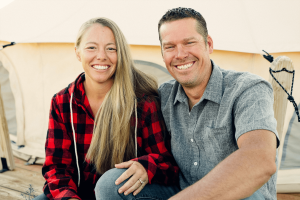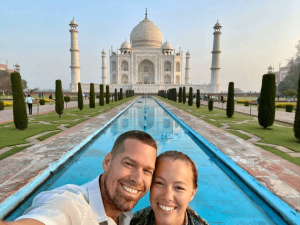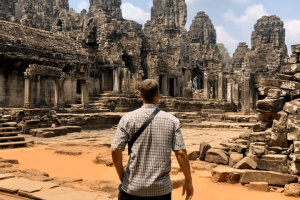We didn’t catch the Coronavirus, but it did catch up with us. Three weeks of being largely off the grid in New Zealand left us behind the times with regard to the health scare. Our flight from Auckland to Manila had a layover in Hong Kong. A few days prior to our departure, the Philippines had begun banning Chinese ports of entry. As such, we were denied access to our flight and the Philippines. It took us a while to catch up on the news and sort it all out. We eventually booked a direct flight to Manila and arrived 12 hours behind schedule. Getting to Manila was half the battle. Catching our connecting flight to Puerto Princesa and the island of Palawan was the other.
There are four terminals at Manila International Airport and none of them are connected. If your connecting flight is in a different terminal, you must check out of the secured zone, take a cab or bus, and re-check in at the next terminal. Online articles suggest leaving 3 to 4 hours if you don’t want to miss your flight. After Customs and Immigration, we had 10 minutes before our connecting flight departed; while also requiring us to get from Terminal 2 to Terminal 4. Clinging onto hope that our plane might be delayed we decided to race for it, fully aware that racing was likely an exercise in futility. I asked to cut the line at the Currency Exchange Booth and was rewarded with quickly coverted some US dollars into PHP to pay a taxi driver. NINE MINUTES! Meanwhile Keshia asked to steal a family’s cab as they were boarding whilst cutting the others in line and we were rewarded with a taxi driver I’ll introduce as insane. EIGHT MINUTES! Upon learning our predicament our driver proceeded to street race and play chicken like he was about to miss his own flight, nearly killing us and everyone else on the road. But he got us to Terminal 4 in record speed. FOUR MINUTES! Then, with the assistance of the airport police (Keshia’s genius idea) we were able cut the lines at check in. TWO MINUTES! No lines at security. ONE MINUTE! Running like the zombie apocalypse just broke out we darted and dodged through the crowd and arrived at our flight. ZERO SECONDS and onboard! I’d love to finish this part of the story with us diving through the closing door and snatching our hats Indiana Jones style. But we just ran up, got on and as they closed the door behind us, two people were aglow with the euphoria of pulling off the impossible. ZERO SECONDS! Never getting our insane taxi drivers name, we’ll forever remember and refer to him by our invented one: Manny Earnheart Pacquiao Jr.
The shuttle bus from Peurto Princesa to El Nido was advertised as 6 hours. Our driver did it in 3.5 hours. He drove on both sides of the road, overtook at least one hundred vehicles, and made Keshia take enough Dramamine to sedate a small elephant. If it weren’t for Manny Earnheart Pacquiao Jr., I would have said he was the most reckless and crazy driver I’d ever seen. Wide-eyed yet alive, we settled into our beach cottage and sat down to a lovely dinner under coconut palms with our toes in the sand and the waves breaking near our feet. It was a crazy sequence of events and made meeting El Nido that much better.
El Nido’s physical geography is one of tropical beaches, steep limestone islands likened to those of Ha Long Bay and Guilin, unsurpassed snorkeling/scuba opportunities, brilliant arrays of coral brimming with aquatic life and romantic sunsets. These attributes deservedly earn the area the title “paradise.” Unfortunately, for every measure of paradise, there are equal measures of struggle: exposed sewage, beach closures due to unsafe chloroform counts, trash piled up in gullies, foot traffic being driven off the side of the highway for lack of pedestrian walkways and water so contaminated even the locals won’t drink it are some glaring examples of this struggle.
It’s a fascinating place, stumbling through modernization and the rapid growth of tourism. In the early ‘80’s the natural population of El Nido was roughly 10,000. As a result of tourism, the population has swelled to over 40,000. In that same span, tourism has grown from virtually 0 to 150,000 people per year. The growth came, the infrastructure to accommodate it has not. An example of this is food supply. The cost of food is generally inflated as there is more demand than supply. Especially prevalent in this example is cost and availability of fish; once a staple food source for the people of Northern Palawan, the fish markets are now largely emptied by tourism restaurants as soon as they open. We noticed many restaurants were still unable to procure the fish for their menus, even after they drained the markets. Another example of this struggle is real estate being unnaturally squeezed into places not yet suitable for occupation. Half of the road running parallel to Corong Corong Beach is developed haphazardly, the dwellings visually sloping downwards as the bamboo stilts mounted into the earthen cliff sides supporting the structures naturally slide and erode. These areas could be reinforced, supplied proper erosion drainage and made secure. But they’re not. So yeah, El Nido needs to catch up with itself. And I’m sure it will one day. The point here is not that we disliked El Nido. Quite the contrary. Rather, it’s just that we’re not hopping on the “paradise” train.
One of the things I immensely enjoyed about El Nido, strange as it may seem, was observing the deficiency of safety codes and regulations. Places I’ve called home you would never allow four adults on a one-person scooter, or group of eight packed into a three-person tricycle or loading a bus so there were nearly as many people on the roof as there were inside. You’d never see a commercial boat operator working barefoot, in constant risk of their feet being crushed. But in El Nido you do see these things. And they seem to do these things capably and safely; following their own codes of conduct based upon their individual abilities and strengths. To me it’s refreshing coming from such an over regulated part of the world.
Another thing that brought joy to both Keshia and myself was the happiness of the local children. Laughter and smiles were generous and frequent. Enthusiastic “hello’s” greeted us as we walked by. None of the children we saw had video games or phones, nor was there any apparent infatuation with status or self-importance. They gathered in large groups, of mixed ages and reveled in each other’s company. There was one such group swinging on a length of rope strung between two palm trees on the beach in front of our cottage, filling our complex with the joy of youth through the duration of our stay. The way children are supposed to be.
Muted by the voices of laughing children, but not silenced, were the soft patters of stray dog paws. They were everywhere, hundreds, if not thousands of them. Most of the dogs were in good health but there were also a handful that fought through unidentified limps and wounds. We enjoyed their company immensely. At beach bars and cafes, they would regularly wander off the sand, discretely taking up residence by our feet, ever hopeful that we might “accidentally” drop one of those pieces of Adobo Chicken. They would follow us from the road to our cottage door, flaunting those sad yet hopeful eyes, saying, “I’ll be your best friend for a treat or belly rub.” The beach dwellers would dig and burry themselves in sand bunkers seeking the cooler depths. They became friends and repeatedly stole our hearts. If you’re a dog person, they’ll quickly feel like family and every now and then your heart will sink when you see the wounded or ill ones. But you’ll always remember the dogs of El Nido.
Our trip to the Philippines was honestly a trip to El Nido. There are 7641 islands in the Philippines, and we’ve explored half of one island, leaving 7640.5 islands left to go. From traveling though other parts of the Philippines, we saw modern cities with golf courses and commercial ports, traffic jams, quaint family communities, rice fields, coconut/pineapple groves and farms, mountains, beaches, etc.; the Philippines is diverse and rich in culture. As we prepare to leave we’re all too aware we had just begun to learn about and explore it.
As we wait here at the airport for our next flight, we’re already reminiscing the neighboring roosters waking us at dawn, tapsilog for breakfast, snorkeling the exotic coral beds, boating around the impossible sculpted limestone islands, coconut palms lining sandy beaches and dinners of pancit bihon and beef kansi at sunset.
We feel El Nido was an excellent introduction to Asia. With that, we now prepare to delve deeper this exotic part of the world and see if that holds true.
Up next: Episode 3, Thailand







